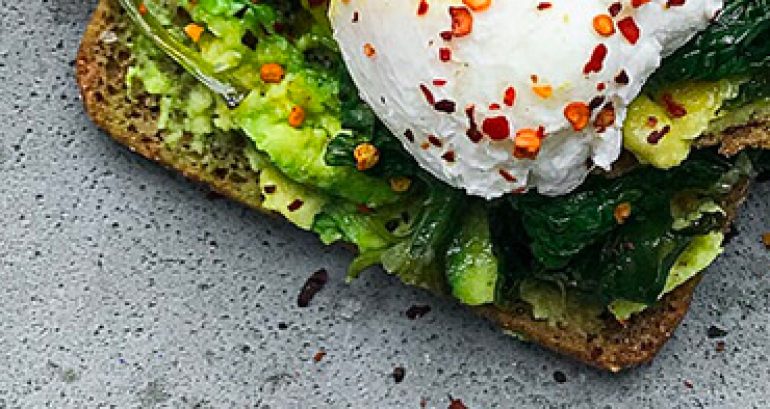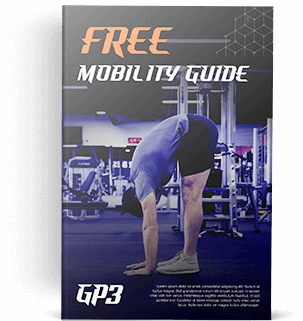Key Points:
1. Too many people think they can’t enjoy what they eat and reach their nutritional goals. This isn’t true.
2. This belief leads to unsustainable, overly-restrictive eating.
3. Start building your “Worth It Foods List” to help you overcome this belief.
Estimated Reading Time: 3-6 minutes
I want to touch on something I’ve heard from multiple clients over the years. It’s some variation of, “I didn’t think I could eat the foods I enjoy and still lose body fat.” Or, “I’ve always associated losing weight with eating more of the foods I don’t like and less of the ones I do.” This mindset is everywhere.
So many foods are demonized and labeled as “bad” that we start to internalize this when we eat certain meals. We start to feel guilt or shame around eating and enjoying particular foods. Then, we fail like a failure for eating them, which negatively impacts our motivation to keep working towards our goals. It’s a vicious cycle. Further, it’s gotten to the point where so many different foods have gotten the “bad” label that it’s incredibly counterproductive.
I’m going to take this opportunity to go on a mini-rant about one food group in particular. I tend to shy away from labeling foods (or anything, really) as simply “good,” or “bad,” but I’m actually pretty comfortable calling this one “good,” in just about every case. Most people don’t eat enough of it, yet millions of people have actually been convinced that they should be wary of it.
Can you guess what it is?
The answer is…fruit!
Segments of the fitness and nutrition industry have lost touch with reality to such a degree that some people seriously believe that fruit is “bad” for them. Let me be clear. I do not blame the people who believe this. They’ve simply been given bad information. I blame the people who initially started spreading this nonsense. I understand that the fitness and nutrition are a business, just like everything else these days, and that fear sells. But, come on. Enough, already. Don’t scare people off of nutritional choices that will benefit them just to stand out.
To set the record straight, here’s why you should probably be eating more fruit. As a quick disclaimer, everyone is different, and please, default to listening to your doctor or dietician on this issue rather than me, but odds are, they probably agree.
Fruit is chock full of the essential vitamins and minerals necessary for an optimally functioning body. Fruit is also high in fiber, high in water content, and low in calories. Most people don’t get enough vitamins, minerals, fiber, and water. Most people also eat too many calories. So, here’s a food group that has more of what we need to survive, and less of what we often over-consume. As an added benefit, the high fiber and water content of fruit means that it will move relatively slowly through your digestive system. This prevents your blood sugar from spiking and crashing, and keeps you feeling full and satisfied.
Think about it. If you were hungry for a snack and decided to eat a pear, an apple, and a banana, odds are, you’d feel pretty full for a while. This would be at least partially due to the volume of food you just put in your stomach. As a point of comparison, let’s say you turned to a more typically American snack choice (and personal weakness of mine), Double Stuf Oreos. Depending on the size of the fruit you chose, you could have four or five Oreos for the same number of calories. I don’t know about you, but if I eat four Oreos, I’m more likely to want four more than to feel full and satisfied. The point of all this is, if fat loss or even just general health is a goal of yours, eating more fruit, and eating daily, will very likely help you get to where you want to be.
And yet, too many people think that fruit is bad for them, “because sugar!” or “because fructose!” Please stop. Nobody ever developed Type-2 diabetes from eating too much fruit. Yes, even the ones that are “high” in sugar, like bananas, pineapples, and grapes. According to the USDA nutritional database, the average medium-sized banana has 14 grams of sugar. For context, that’s about the same as 1/3 of a can of Coke or Pepsi. While drinking one soda per day probably isn’t the best nutritional choice you can make, it’s also not likely to kill you, contrary to what some will have you believe. With that understood, we can see that eating a food that has only ~35% as much sugar as a can of soda, plus vitamins, minerals, fiber, and water is completely fine. So, please, avoid falling for the trap that something can be automatically “bad” just because it contains a bit of natural sugar.
Okay, mini-rant over.
Luckily, I’m not just talking about “healthy” foods.
In my opinion, eating is one of the rare human activities that’s almost universally joyful. And since it’s necessary to survive, shouldn’t we find a way to enjoy it? The answer is an unequivocal yes. Plus, the second we discover for ourselves that enjoyment of eating and reaching our fitness goals aren’t mutually exclusive, the greater the likelihood we’ll achieve them. This is because nearly anyone can suffer through a six-week restrictive diet and see temporary results, but hardly anyone can truly give up alcohol, desserts, and their favorite snacks and treats for the rest of their lives. Realistically, very few people should do that, anyway.
Instead, we need to find a way to fit our indulgences into our nutritional approach. This is where the concept I call the “Worth It Foods List” comes in so handy.
Make it a priority to build a list of foods that:
- You like
- Agree with your food sensitivities/allergies
- Keep you full for what you consider to be a reasonable amount of time
Once you’ve done this, enjoying your favorite treats becomes guilt-free. Do it to prove to yourself that you do not have to choose between reaching your fitness goals and enjoying your meals. While you can’t expect to pay zero attention to your nutritional habits and see the results you want, you can and should learn how to plan around indulgences without letting them “ruin” an entire day. Going to have pizza for dinner tonight? No problem! Let’s just make sure breakfast and lunch come from your Worth It Foods List.
Practicing this allows your nutritional goals and your progress to become integrated with habits that will be useful for your entire life. That’s much healthier and more realistic than giving up sugar and alcohol for eight miserable weeks and then bingeing on them once your sentence (shoot, I mean diet) is over.
Before you go, I’d love to hear from you! Have you climbed out of the trap of believing that enjoying food and reaching your nutritional goals are mutually exclusive? Also, which meals are on your Worth It Foods List?

